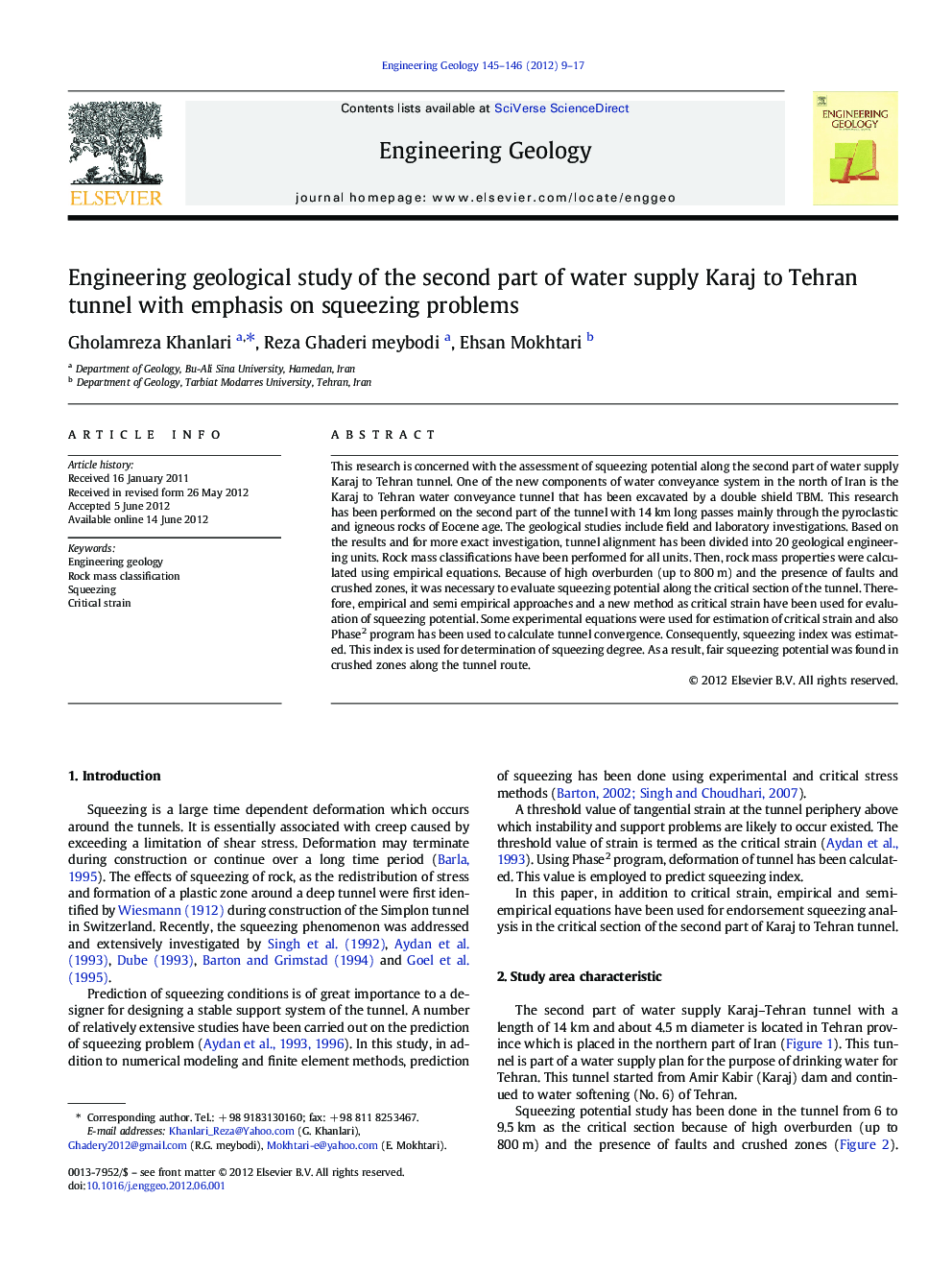| Article ID | Journal | Published Year | Pages | File Type |
|---|---|---|---|---|
| 4743960 | Engineering Geology | 2012 | 9 Pages |
This research is concerned with the assessment of squeezing potential along the second part of water supply Karaj to Tehran tunnel. One of the new components of water conveyance system in the north of Iran is the Karaj to Tehran water conveyance tunnel that has been excavated by a double shield TBM. This research has been performed on the second part of the tunnel with 14 km long passes mainly through the pyroclastic and igneous rocks of Eocene age. The geological studies include field and laboratory investigations. Based on the results and for more exact investigation, tunnel alignment has been divided into 20 geological engineering units. Rock mass classifications have been performed for all units. Then, rock mass properties were calculated using empirical equations. Because of high overburden (up to 800 m) and the presence of faults and crushed zones, it was necessary to evaluate squeezing potential along the critical section of the tunnel. Therefore, empirical and semi empirical approaches and a new method as critical strain have been used for evaluation of squeezing potential. Some experimental equations were used for estimation of critical strain and also Phase2 program has been used to calculate tunnel convergence. Consequently, squeezing index was estimated. This index is used for determination of squeezing degree. As a result, fair squeezing potential was found in crushed zones along the tunnel route.
